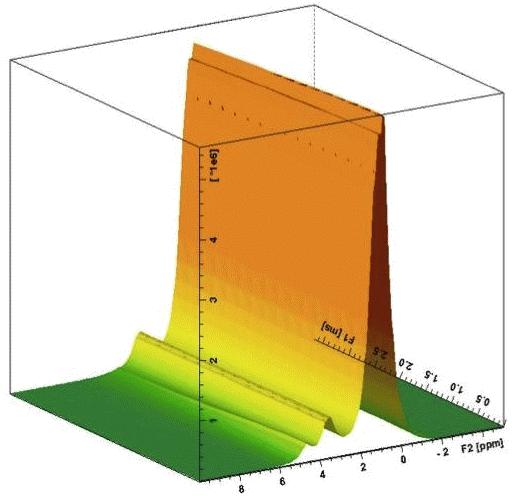
The cubic phases formed by amphiphiles are an important class of nanostructured self-assembled material. Colloidally stable, particulate dispersions of the inverse cubic phase, termed cubosomes, are of particular interest due to their thermal stability, large surface-area to volume ratio (up to 400m2.g-1 of cubic gel), their ability to incorporate functional molecules, and a viscosity approximately equal to that of water. In such structurally complex, multi-component systems, diffusion NMR is a powerful technique for measuring small molecule diffusion within cubosomes and, importantly, allows simultaneous acquisition of diffusion coefficients for free molecules in solution or bound to a receptor embedded in the lipid matrix. The model system used here is the biotin-Neutravidin system (KD = ∼10-15 M), with the biotin chemically attached to a lipid incorporated into the cubosomes, whilst the Neutravidin is added in solution. The results reported here indicate a multi-component diffusion of water and proteins through the pores of cubosomes. NMR diffusion measurements show signal attenuation in the water and protein resonances whilst the lipid components of the system remain unaffected (Figure). The decrease in diffusion constants for water and protein in the cubosome system in comparison to free solution indicates that diffusion is dependent on the porous nature of the cubosome and protein binding.
